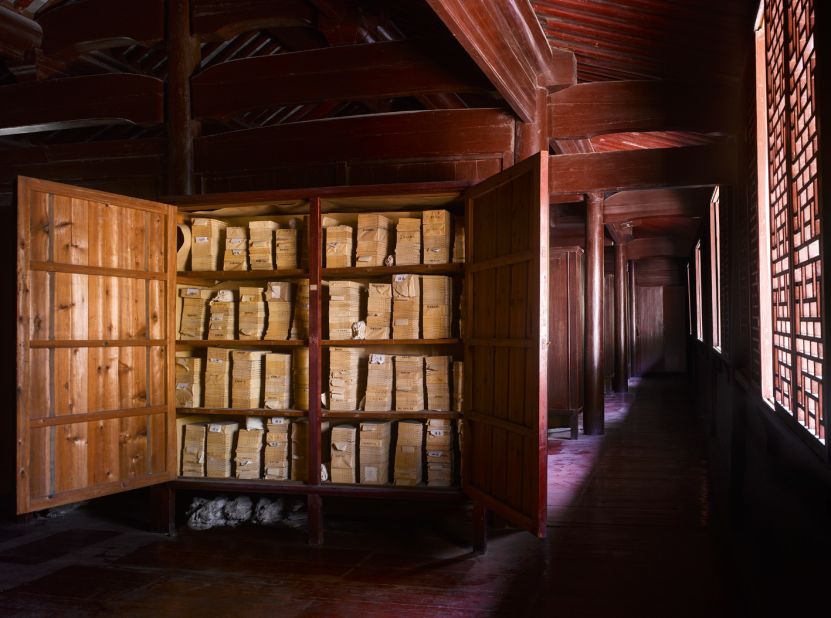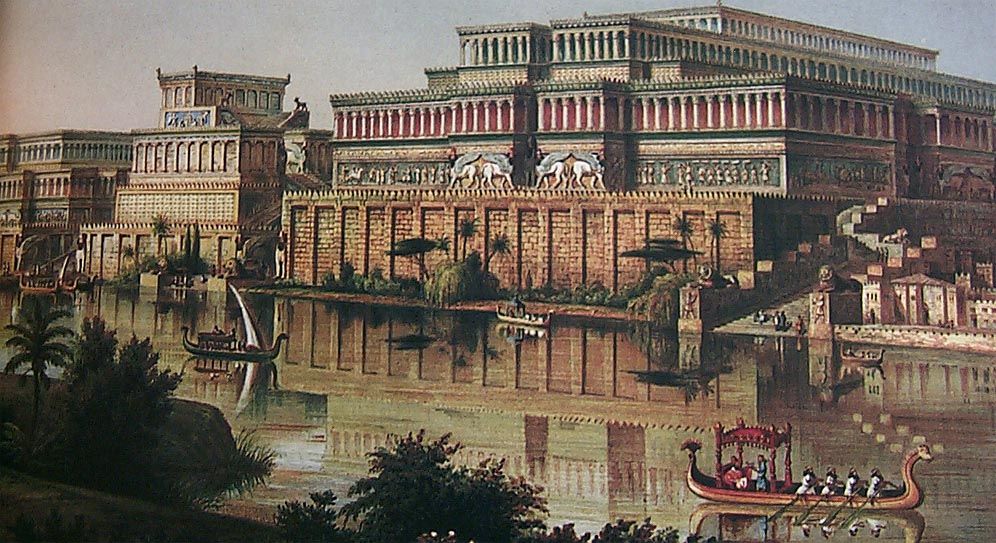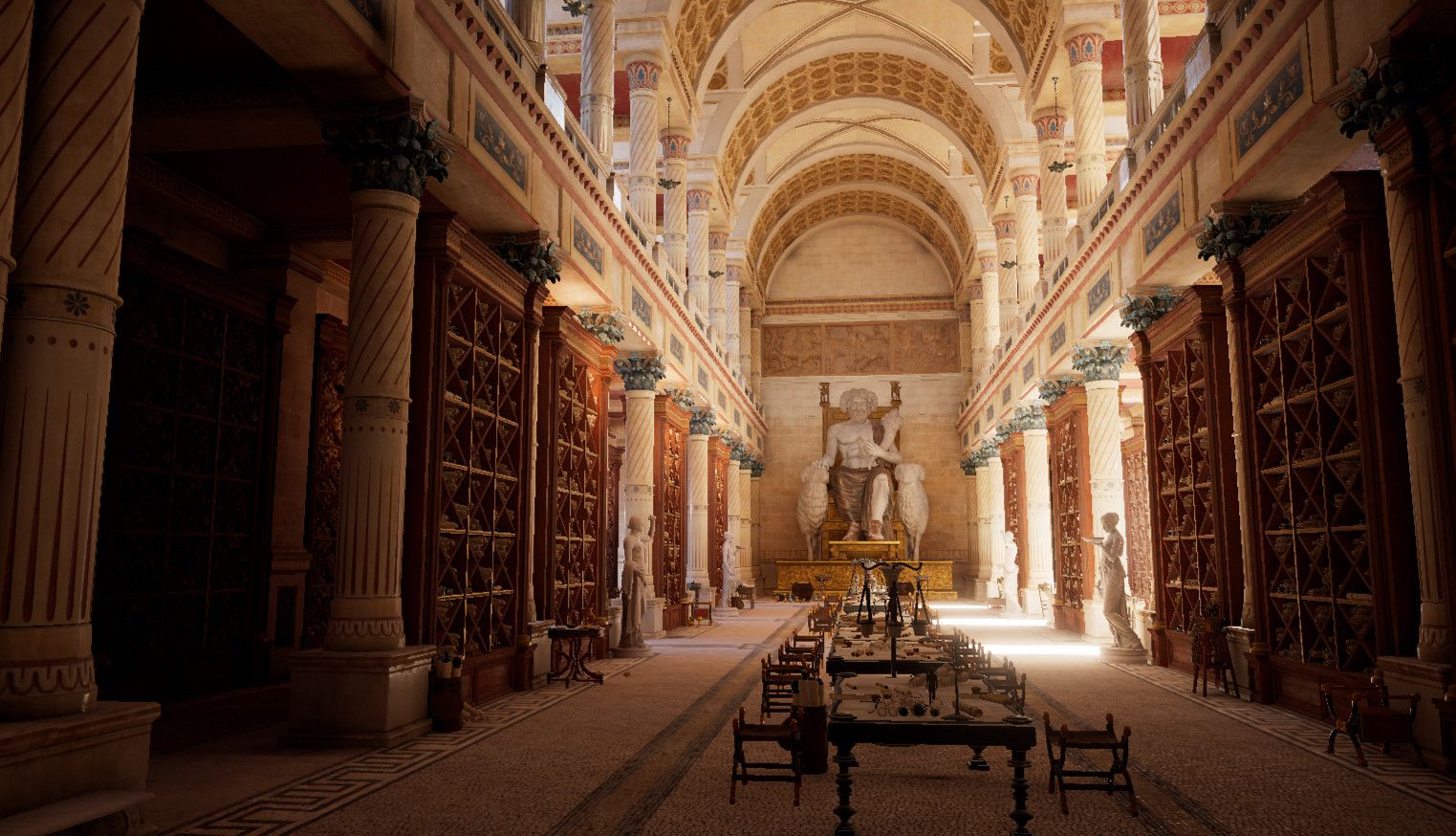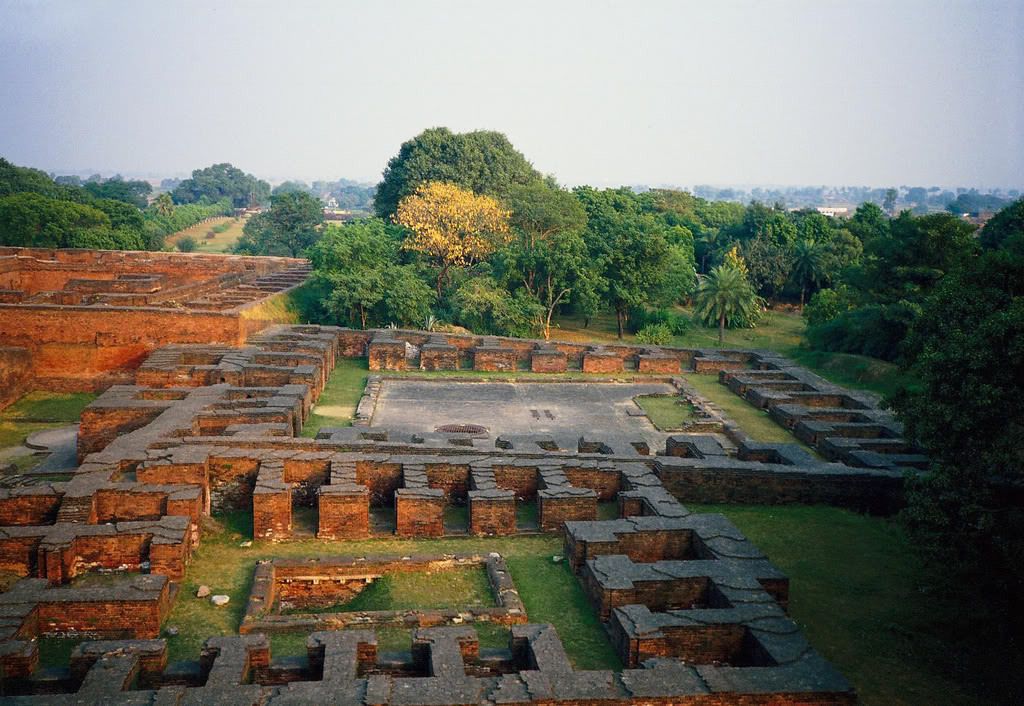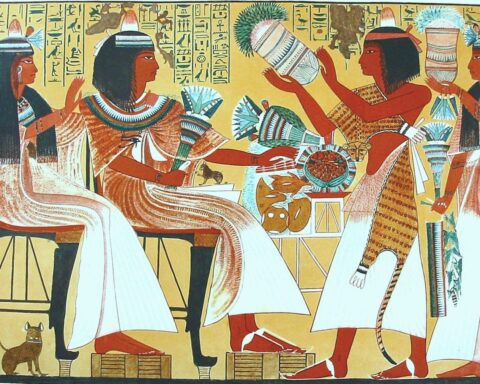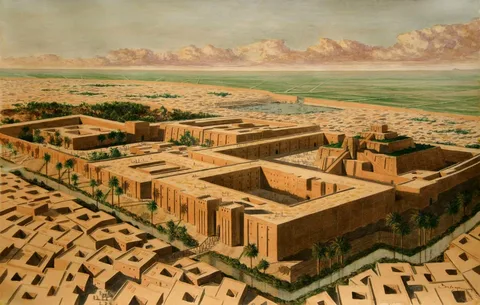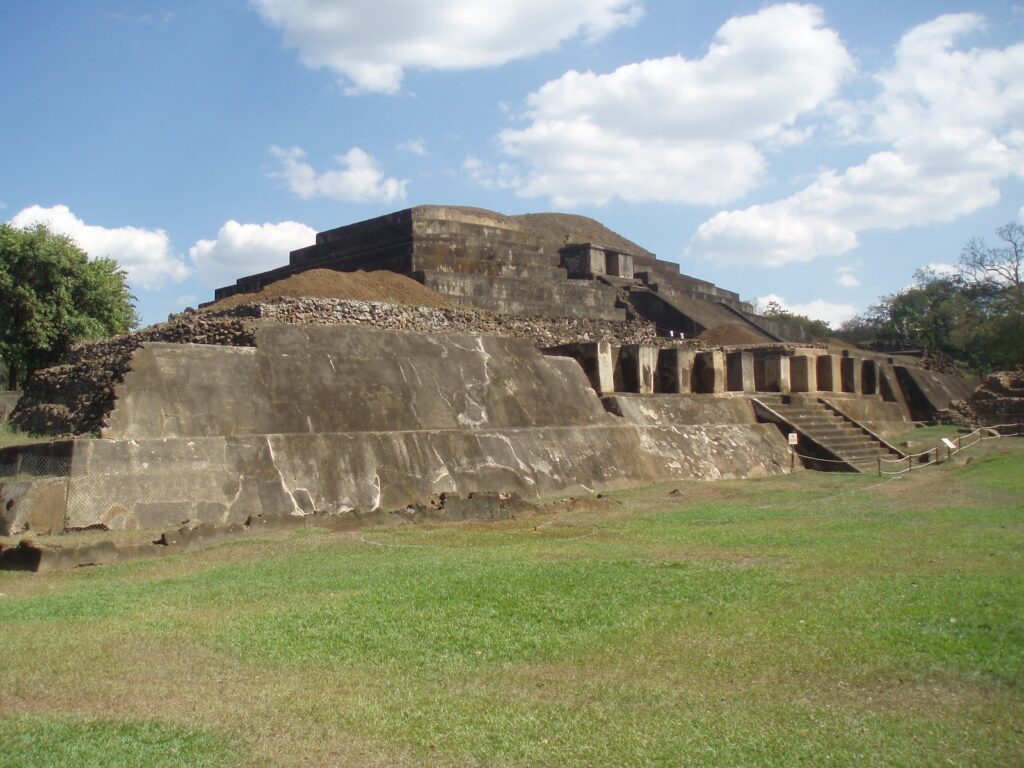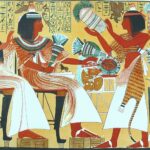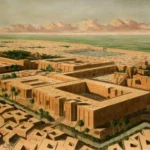Ancient Mesopotamia’s Legacy
The Library of Ashurbanipal
The Library of Ashurbanipal was one of the most significant libraries of the ancient world, located in the city of Nineveh, Assyria (modern-day Mosul, Iraq). It was named after its founder, King Ashurbanipal (also known as Asurbanipal), who ruled Assyria from 669 to 627 BCE.
Established during the reign of Ashurbanipal, the library was built around 668-657 BCE and consisted of a vast collection of clay tablets containing texts written in cuneiform script. The library was dedicated to the collection and preservation of knowledge, particularly on the subjects of mythology, literature, history, and magic.
One of its most important contributions was the collection of Epic of Gilgamesh, one of the earliest surviving works of literature, which told the story of the king who went in search of immortality. It also contained numerous other literary works, including myths, legends, historical accounts, and medical treatises.
The library’s collection included not only written texts but also clay tablets containing mathematical tables, astronomical observations, and other scientific data. The library was a major center for learning and scholarship, where scholars could study and translate cuneiform texts from various regions of the ancient Near East.
The Library of Ashurbanipal played an important role in spreading knowledge and ideas throughout the ancient world. Its collection influenced later civilizations, including the Greeks and Romans, who borrowed ideas and stories from the library’s texts. The library also served as a model for other libraries in the region, inspiring the establishment of similar institutions.
The Library of Ashurbanipal was eventually destroyed during the conquest of Nineveh by the Babylonian king Nabopolassar in 612 BCE. However, many of its clay tablets survived and were later discovered by archaeologists in the site’s excavation. Today, some of these surviving tablets are housed at museums around the world, including the British Museum.
Despite its destruction, the Library of Ashurbanipal remains one of the most important cultural artifacts of ancient civilization. It stands as a testament to the power of knowledge and learning in human societies throughout history, serving as a reminder of the importance of preserving and protecting our collective cultural heritage for future generations.
The Library of Ashurbanipal, located in Nineveh, was one of the oldest and most significant libraries of the ancient world. Established during the NeoAssyrian Empire, it housed over 30,000 clay tablets containing literary works, business records, and scientific knowledge.
The Library of Ashurbanipal, located in Nineveh, was one of the most remarkable repositories of human knowledge in ancient times. Established during the Neo-Assyrian Empire, it stood as a testament to the advanced learning and cultural achievements of the civilization that flourished there.
Founded by King Ashurbanipal himself, this magnificent library served as the imperial repository for texts on literature, business records, scientific knowledge, and other forms of written communication. Its collection was staggering, with over 30,000 clay tablets containing an extraordinary range of material.
The significance of the Library of Ashurbanipal lies in its comprehensive coverage of ancient literary works, including epics, poetry, stories, and wisdom literature. Many of these texts have been lost to time or were never committed to writing, making this library an invaluable resource for scholars seeking to understand the intellectual and cultural heritage of ancient Mesopotamia.
The library’s holdings also included business records, such as contracts, receipts, and other documents that provide insight into the economy and administrative practices of the Neo-Assyrian Empire. These records are a treasure trove for historians and archaeologists, offering glimpses into the daily lives of merchants, officials, and common people.
In addition to literature and business records, the Library of Ashurbanipal housed scientific knowledge, including texts on mathematics, astronomy, medicine, and divination. These works demonstrate a high level of sophistication in various fields, showcasing the advanced understanding of the ancient Mesopotamians in areas that were considered essential for their daily lives.
The discovery of the Library of Ashurbanipal has revolutionized our understanding of ancient civilization, shedding light on many aspects of life in Mesopotamia during the Neo-Assyrian period. Its importance lies not only in its sheer size and scope but also in the unparalleled opportunity it provides to study the thoughts, behaviors, and knowledge systems of a long-lost culture.
Unfortunately, the library was destroyed by fire during the conquests of the Persian King Nabopolassar’s son Nebuchadnezzor II. However, many clay tablets were rescued from the ashes and now reside in museums and institutions around the world, waiting to be deciphered and studied by scholars.
The legacy of the Library of Ashurbanipal continues to inspire awe and curiosity among scholars and the general public alike. Its story serves as a poignant reminder of the importance of preserving cultural heritage and promoting knowledge sharing across generations.
The Birthplace of Greek Knowledge
The Library of Alexandria
The Library of Alexandria was one of the most significant libraries of the ancient world, located in Alexandria, Egypt. It was founded in the 3rd century BC during the Ptolemaic Kingdom and was a major center of scholarship and learning.
The library’s collection was vast, with estimates suggesting that it housed over 700,000 volumes on various subjects including mathematics, astronomy, medicine, literature, and history. The library was not only a repository for books but also a place where scholars and researchers could come to study and engage in intellectual discussions.
One of the key features of the Library of Alexandria was its system of organization and cataloging. The library used the “catalog of contents” method, which involved listing the titles of all books within each subject category. This made it easier for scholars to find specific texts and facilitated research.
The library was also famous for its scribes who carefully copied manuscripts by hand using papyrus or parchment. These scribes were skilled in various scripts including Greek, Demotic, and Coptic languages.
The Library of Alexandria played a crucial role in the preservation and transmission of knowledge from ancient civilizations such as Greece, Rome, and Egypt. Scholars came from all over to consult its vast collections, often copying manuscripts by hand to take back with them.
Despite its significance, the library’s fate was tied to the fortunes of the Ptolemaic Kingdom, which eventually declined after the rise of the Roman Empire. A series of fires and destructions ultimately led to the loss of much of the library’s collection. Some accounts suggest that the final destruction occurred in 48 BC when Julius Caesar’s forces set fire to the library during a civil war.
Today, very few of the original works from the Library of Alexandria survive. However, its legacy can be seen in the numerous copies and translations of ancient texts that exist today, serving as a testament to the enduring power of human knowledge and scholarship.
The Great Library of Alexandria, in Egypt, was a major center of scholarship and learning during the Ptolemaic Kingdom. Founded by Ptolemy I Soter in the 3rd century BC, it attracted scholars from all over the world to study and translate ancient texts.
The Great Library of Alexandria was a renowned institution that played a pivotal role in the preservation and dissemination of knowledge during the Hellenistic period. Located in Egypt, it served as a hub for scholars, philosophers, and scientists from across the ancient world, fostering an environment of intense intellectual curiosity and pursuit of learning.
Established by Ptolemy I Soter, one of Alexander the Great’s generals, around 300 BC, the library was part of the larger city of Alexandria, a cosmopolitan center that blended Greek and Egyptian cultures. The library itself was situated near the Mediterranean Sea, allowing for easy access to international scholars and traders.
Under the patronage of successive Ptolemaic rulers, particularly Ptolemy III Euergetes (246-221 BC) and Ptolemy IV Philopator (221-205 BC), the library flourished, attracting scholars from as far afield as Greece, Rome, Babylon, and India. The collection was said to comprise over 700,000 volumes, including works on mathematics, astronomy, medicine, philosophy, and literature.
One of the most significant aspects of the Great Library was its role in translating ancient texts from various languages into Greek. This endeavor, facilitated by scholars like Aristarchus of Samos, helped to spread knowledge and ideas throughout the Mediterranean world. The library’s collection included rare and valuable manuscripts, many of which were copied or adapted for widespread dissemination.
The Great Library also served as a center for philosophical and scientific inquiry. Scholars such as Euclid, Archimedes, and Eratosthenes worked there on groundbreaking projects, including the development of mathematics and geography. The library’s scribes and scholars contributed to the creation of new texts and commentaries on existing works, further enriching the intellectual landscape.
Tragically, the Great Library of Alexandria met its demise due to a combination of factors, including civil wars, fires, and earthquakes. Although there is ongoing debate about the extent of the library’s destruction, it is believed that the last major conflagration occurred in 641 AD during the Arab conquest of Egypt.
Despite its eventual downfall, the Great Library of Alexandria left an indelible mark on human history, serving as a testament to the power of knowledge and scholarship. Its legacy continues to inspire new generations of scholars, thinkers, and explorers, underscoring the importance of preserving and sharing knowledge across cultures and time.
Indian Knowledge Traditions
The Nalanda University Library
The Nalanda University Library was one of the most significant libraries in the ancient world. Established during the reign of Emperor Ashoka, it was a hub of Buddhist learning and scholarship for over 700 years.
Located in present-day Bihar, India, the library was built in the 5th century AD and housed over a million palm leaves containing scriptures and commentaries on various subjects such as Buddhist philosophy, astrology, medicine, and mathematics. These palm-leaf manuscripts were written in several languages including Sanskrit, Pali, and Prakrit.
The library was renowned for its vast collection of texts on Buddhism, which included the sacred Tripitaka (the teachings of the Buddha) and various commentaries by prominent Buddhist scholars. Its collection also included works on Hinduism, Jainism, and other contemporary philosophical systems.
Notably, the Nalanda University Library was a center of learning for renowned scholars from all over Asia, including China, Japan, Korea, and Tibet. Students came to study the sacred texts, attend lectures by prominent teachers, and engage in debates on various subjects.
The library’s significance extended beyond its collections and academic pursuits. It represented a symbol of peace, harmony, and unity among diverse cultures and philosophical traditions. The Nalanda University Library was truly a place where people from all walks of life came together to explore the deeper meaning of human existence.
Unfortunately, much of the library’s collection perished due to natural disasters, wars, and other unfortunate events that ravaged India throughout history. However, some of its most precious palm-leaf manuscripts were rescued by monks who smuggled them out of India during the 12th century AD.
The legacy of the Nalanda University Library continues to inspire scholars today. In 2010, UNESCO declared the site a World Heritage Site in recognition of its rich cultural and historical significance. Today, efforts are underway to rebuild the library as a living testament to its former glory, serving as a center for interfaith dialogue, scholarship, and peace-building.
Nalanda University, established in ancient India around 427 AD, was a prominent center of learning. Its library contained numerous manuscripts on philosophy, science, and logic, making it an important hub for Buddhist scholars.
Nalanda University, established around 427 AD in ancient India, was a prominent center of learning that flourished for centuries, earning a reputation as one of the most esteemed institutions of its time.
The university’s library, often described as one of the greatest libraries of all time, housed an impressive collection of manuscripts on various subjects, including philosophy, science, and logic. The library was renowned for containing a vast array of texts, many of which were written in Sanskrit or other ancient languages of India.
For Buddhist scholars and philosophers, Nalanda University served as a vital hub of learning, attracting esteemed scholars from across the Indian subcontinent and beyond. The university’s curriculum encompassed an extensive range of subjects, including philosophy, logic, grammar, astronomy, mathematics, and medicine.
The teachings and discussions that took place within the hallowed halls of Nalanda University significantly influenced Buddhist thought and practice throughout history. Scholars who studied at Nalanda went on to become respected teachers, spreading their knowledge and interpretations to distant lands.
Nalanda’s influence extended far beyond India’s borders, with scholars from China, Korea, Tibet, and other countries traveling to the university to learn from its esteemed faculty. The interactions between Indian Buddhist masters and foreign visitors led to an exchange of ideas, contributing significantly to the development of Buddhism in various forms across Asia.
Tragically, Nalanda University was destroyed by invading forces in 1204 CE. Although its physical structure was lost, the intellectual legacy of Nalanda lived on, shaping Buddhist thought and practice for centuries to come. In recent years, a new Nalanda University has been established in Rajgir, India, reviving the spirit of ancient Nalanda as a hub of learning and scholarly inquiry.
Maya Civilization’s Hidden Knowledge
The Madrid Codex
The Madrid Codex is an ancient Mesoamerican manuscript that holds significant importance for understanding the cultural, historical, and spiritual practices of the pre-Columbian civilizations. The codex, also known as the Tro-Cortesianus Codex, is considered one of the most important documents to have survived from the Post-Classic period of Mesoamerica.
Here are some key points about the Madrid Codex:
- The Madrid Codex was created by the Maya people in the region of Chetumal, which is now part of modern-day Mexico and Guatemala. It is believed to have been written around the 11th or 12th century.
- The codex measures approximately 32 x 25 inches (81 x 63 cm) and contains a total of 56 leaves. The text is composed of hieroglyphics, which were used by the Maya to convey complex ideas and stories.
- Unfortunately, many pages from the original codex are missing or have been damaged over time due to environmental factors such as humidity and light exposure.
The Madrid Codex is housed in the National Library of Mexico in Mexico City and is considered a national treasure. It has undergone several restoration efforts to preserve its condition, including the use of modern technology and materials.
One of the most significant aspects of the Madrid Codex is its unique insight into the mythology and cosmology of the Maya people. The text describes various gods, goddesses, and supernatural beings that played important roles in their spiritual practices.
The codex also provides valuable information about the Maya’s astronomical knowledge, including observations of celestial events such as solar eclipses and planetary alignments.
Additionally, the Madrid Codex contains information on the political and economic systems of the Maya civilization, including their use of a calendar system based on cycles of 360 days.
The discovery of the Madrid Codex has shed new light on the rich cultural heritage of Mesoamerica, highlighting the advanced knowledge and sophisticated practices of ancient civilizations. It serves as an important reminder of the importance of preserving our cultural heritage for future generations.
The Madrid Codex is one of the few remaining Mayan books from the preColumbian era. Discovered in Mexico, this codex contains ritual knowledge and astronomical charts that provide valuable insights into Maya civilization.
The Madrid Codex is considered one of the most significant and well-preserved Mayan books from the pre-Columbian era. Discovered in Mexico, this codex contains a wealth of information on ritual knowledge, astronomical charts, and other aspects of Maya civilization that provide valuable insights into the culture and society of the ancient Maya people.
One of the most notable features of the Madrid Codex is its collection of astronomical charts, which demonstrate a sophisticated understanding of astronomy and mathematics among the Mayans. These charts depict various celestial events, including planetary movements, lunar eclipses, and solar alignments, which would have been used to plan agricultural activities, festivals, and other important rituals.
The codex also contains a significant amount of ritual knowledge, including descriptions of sacred rituals and ceremonies, as well as information on the mythology and cosmology of the Maya. These texts provide valuable insights into the spiritual practices and beliefs of the ancient Maya people, including their understanding of the universe, the gods, and human destiny.
The Madrid Codex is an important artifact for scholars studying the Maya civilization because it provides a unique window into the culture and society of this ancient people. The codex contains information on various aspects of Mayan life, including politics, economics, social organization, and artistic expression, which are essential for understanding the complexities of Mayan society.
The discovery of the Madrid Codex has had significant implications for our understanding of the pre-Columbian era in Mesoamerica. The codex provides evidence that the Maya were a highly advanced civilization with a sophisticated writing system, astronomical knowledge, and artistic expression, which challenges previous notions about the “barbarism” of pre-Columbian America.
The Madrid Codex is now housed at the Real Academia de la Historia in Madrid, Spain, where it remains an important artifact for scholars studying Mayan civilization. Despite its significance, however, much of the codex remains undeciphered and continues to be a subject of ongoing research and study.
Some of the key features of the Madrid Codex include:
- A collection of astronomical charts that demonstrate sophisticated knowledge of astronomy and mathematics
- Ritual knowledge and descriptions of sacred rituals and ceremonies
- Information on mythology and cosmology, including the understanding of the universe, the gods, and human destiny
- A unique window into Mayan society, providing insights into politics, economics, social organization, and artistic expression
- Evidence of advanced knowledge in various fields, challenging previous notions about the “barbarism” of pre-Columbian America
Roman Empire’s Treasures
The Library of Trajan
- The Library of Trajan is one of the most significant libraries of the ancient world, located in Rome, Italy.
- It was built during the reign of Emperor Trajan (98-117 AD) and is considered a masterpiece of Roman architecture.
- The library was designed by the architect Apollodorus of Damascus, who was also responsible for designing many other important buildings in Rome.
- The Library of Trajan was a symbol of the power and grandeur of the Roman Empire, showcasing the importance of education and knowledge.
- It housed over 20,000 scrolls, which is an impressive collection considering that it is estimated that only around 10% of books from ancient Greece have survived to this day.
- The library’s collections included works on philosophy, poetry, history, mathematics, medicine, astronomy, and other subjects.
- Among the notable works stored in the Library of Trajan were manuscripts by famous authors such as Aristotle, Sophocles, Euripides, and Homer.
- The library also had a section dedicated to law, which housed important documents related to Roman law and governance.
- The architecture of the Library of Trajan was designed to be impressive and awe-inspiring. The building was constructed on a 200-foot square foundation, with a series of steps leading up to it.
- The entrance hall was surrounded by tall columns, with a large archway at the back that led into the main reading room.
- The library’s design allowed natural light to pour in from above through windows and skylights, which also served as ventilation shafts.
- Unfortunately, very little remains of the Library of Trajan today. The building suffered significant damage over the centuries due to fires, earthquakes, and neglect.
- In 1460, the Roman Senate ordered that many of the library’s contents be removed and transferred to other locations in Rome.
- The few remaining ruins of the Library of Trajan were eventually incorporated into a new church called San Nicola Inferiore, which was built on top of the original site in the 13th century.
Located in Rome, the library built by Emperor Trajan was a renowned center for education and literature. Although only fragments remain, it is believed to have housed over 700,000 volumes on various subjects, including law, medicine, and philosophy.
The library built by Emperor Trajan in Rome was a prestigious institution that played a pivotal role in promoting education and literature during ancient times. Its sheer size is a testament to the significance it held, with estimates suggesting that it housed over 700,000 volumes. These books encompassed a wide range of subjects, including law, medicine, and philosophy, which were crucial for the development of various fields.
The presence of such a vast collection of texts underscores the importance of education during that era. Access to knowledge was highly valued, and institutions like Trajan’s library served as catalysts for intellectual growth and exchange. Scholars and intellectuals from far and wide would have visited this esteemed repository to acquire new ideas, engage in discussions, and expand their understanding of the world.
The impact of Trajan’s library extended beyond its walls, contributing significantly to Rome’s reputation as a hub of learning. The city attracted scholars, poets, and philosophers who sought to engage with the vast array of texts at their disposal. This convergence of minds helped foster an environment of creativity, debate, and intellectual exploration that would have far-reaching consequences for the development of Western civilization.
Despite its significance, the library itself has largely disappeared, leaving behind only fragments of what once was. Yet, the legacy of Trajan’s library lives on as a testament to the power of knowledge and education. It serves as a reminder that even in the face of destruction or erosion over time, the impact of institutions like this can endure for centuries, shaping the course of history and continuing to inspire new generations.
As a celebrated center of learning, Trajan’s library played an indispensable role in ancient Rome’s cultural and intellectual landscape. Its influence was felt throughout the city, contributing to the development of law, medicine, philosophy, and other disciplines that continue to shape our understanding of the world today.
Chinese Scholarly Traditions
The Imperial Library of Beijing
The Imperial Library of Beijing is one of the most significant libraries in the world, not only because of its historical importance but also due to its extensive collection of rare and precious volumes.
Located in Beijing, China, the Imperial Library was founded during the Ming Dynasty (1368-1644) and served as the official library of the imperial court for over 500 years.
Repository of knowledge, the Imperial Library contained an estimated 10 million volumes, including ancient manuscripts, rare books, and precious scrolls.
The library’s collection included works on philosophy, history, literature, science, and technology from all over the world, including China, India, Korea, Japan, and Europe.
Many of the library’s holdings were copied or transcribed by hand, making each book a unique and valuable work of art.
The Imperial Library played an important role in the development of Chinese culture and learning during the Ming and Qing dynasties (1644-1912).
Scholars from all over China came to the library to study and copy rare texts, while emperors and court officials used the library as a resource for policy-making and governance.
The library’s significance extends beyond its historical importance; it also serves as a symbol of Chinese cultural heritage and a reminder of the country’s rich literary and intellectual traditions.
Unfortunately, much of the Imperial Library was destroyed in the late 19th century due to the Boxer Rebellion, which saw the burning of many books and buildings.
However, efforts have been made in recent years to preserve the library’s remaining collections and rebuild some of its damaged volumes.
The Imperial Library of Beijing is an important reminder of the importance of preserving our cultural heritage and the need for continued support for libraries and education around the world.
During the Qing dynasty, the Imperial Library in Beijing stored an enormous collection of manuscripts and books on Chinese classics, history, and literature. This library played a crucial role in preserving China’s rich cultural heritage.
The Imperial Library, situated in Beijing during the Qing dynasty, housed an immense repository of manuscripts and books covering Chinese classics, history, and literature.
This esteemed institution played a pivotal role in safeguarding China’s rich cultural heritage by preserving and making available to scholars and researchers the nation’s most valuable written legacies.
At its peak, the library contained a vast collection of texts that spanned various genres, including philosophy, poetry, history, and literature. The collection was further augmented by the inclusion of rare manuscripts, often copied by hand and adorned with intricate calligraphy.
The library’s significance extended beyond mere storage; it also functioned as an intellectual hub where scholars, sages, and experts from various fields convened to engage in learned debates, exchange ideas, and share knowledge.
Notably, the library’s collections were not limited to Chinese texts alone. They also included foreign works that had been translated or transcribed by Chinese scholars during their interactions with neighboring countries and regions.
The significance of the Imperial Library can be measured by its contribution to China’s cultural, intellectual, and literary landscape. By safeguarding these precious manuscripts and books, it ensured that future generations could appreciate and learn from the works of ancient sages, poets, historians, and philosophers.
Notable Collections
The Imperial Library stored numerous valuable collections, including:
- Chinese Classics: Works such as the I Ching, the Book of Songs, and the Doctrine of the Mean were meticulously preserved.
- Historical Records: Chronicles, annals, and historical texts that documented significant events and milestones in Chinese history were carefully stored.
- Literary Masterpieces: Poems by famous poets like Du Fu, Li Bai, and Wang Wei were cherished and protected.
- Philosophical Treatises: Works on Confucianism, Taoism, and Buddhism that explored the intricacies of Chinese thought and philosophy.
The Imperial Library’s impressive collections served as a testament to China’s rich cultural heritage and its enduring impact on scholarship, literature, and intellectual pursuits.
- Countries That Start With The Letter N - September 3, 2024
- Animals That Live In The Tundra - September 1, 2024
- Animals That Live In Madagascar - September 1, 2024

